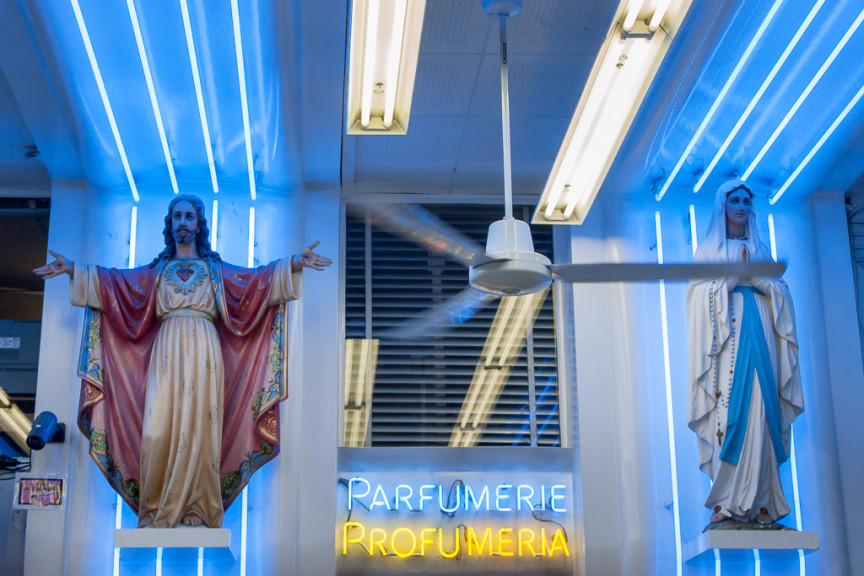Today I am very pleased to present the work of Robert Rutöd. As always this piece, an introduction to his work, will initiate SnappedAway In Depth Series of posts: first an interview, then an opportunity to showcase one project and finally a selection of one photo picked from the images published during the whole week, which will be later printed on a t-shirt.
Robert’s work captivated me straight away, I must admit. I like several things about it, but if I were to put in a single sentence, what spoke to me most was his ability to conceal difficult questions as simple, seemingly straightforward images on the verge of the popular kind of street photography. He is also not too fussed about putting on airs of aesthetically minded artist – you won’t find him chasing “interesting light”, “sophisticated compositions” or any other catch phrases meant to signify “high art”. It’s all about the content, the action or index of the frame. This is not to say Robert’s work in naïve in its realism, to the contrary, he is exploring the function of images in contemporary culture with a keen eye, sometimes not dissimilar to Ghirri or Parr. In fact, some of the more vernacular motives we encounter in his work seem to come from the same love/hate relationship to the prosaic or vulgar as Martin Parr is known to have. However, Robert’s interests flow in several, rather surprising directions simultaneously, which is probably another of his key characteristics.
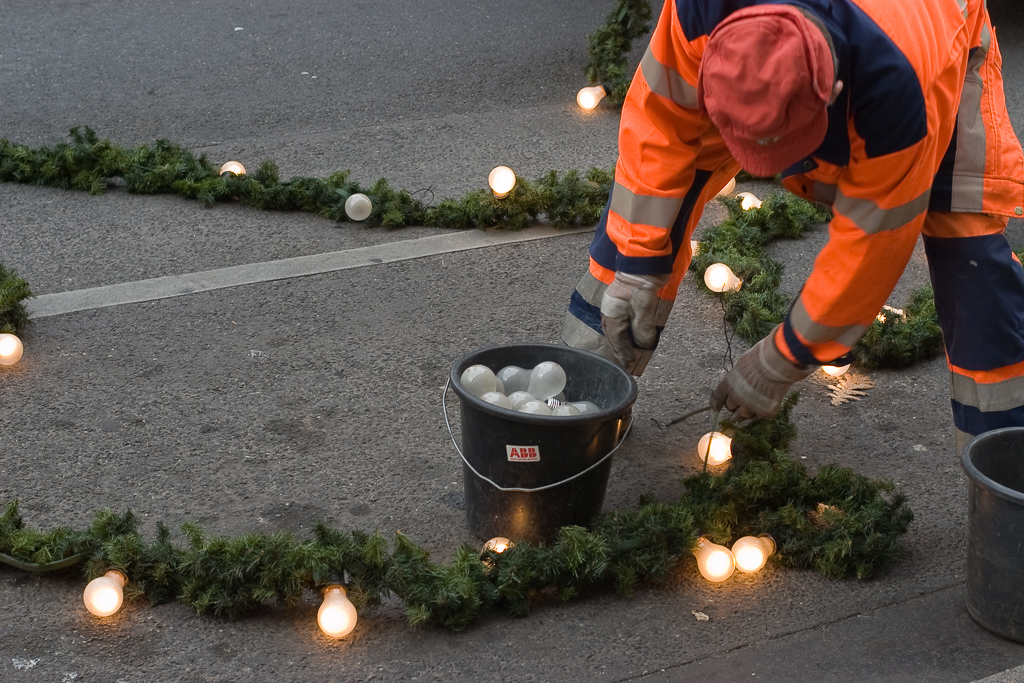
Looking at the first image of a city worker, clad in blaze orange, working on assembling (or disassembling) some sort of Christmas decorations, straight away one gets the feeling of quite a complex image, a crossing point of several themes we will see coming back again and again: religion, labour, fascination with the potentiality of symbolism within the everyday, the limitations of a photograph to convey meaning (it would be quite crucial to know if the man is introducing more light into the scene or taking the light out, is it creation or destruction we are witnessing, but that is exactly the point, we are faced with a impossible limitation of our medium – a static image will never let you know all its secrets, as Garry Winogrand was famously stating). Any of those topics could become a whole article, series or a book if you wanted it to – and that is what I meant by “difficult questions”. I really admire the unpretentious look to this image, no high contrasts, no colour shifts, a very “plain looking” straight punch – Robert is sure of himself on a level where he doesn’t need the image to look “artsy”, no large vintage film here (again, a trait I also admire in Parr’s work).
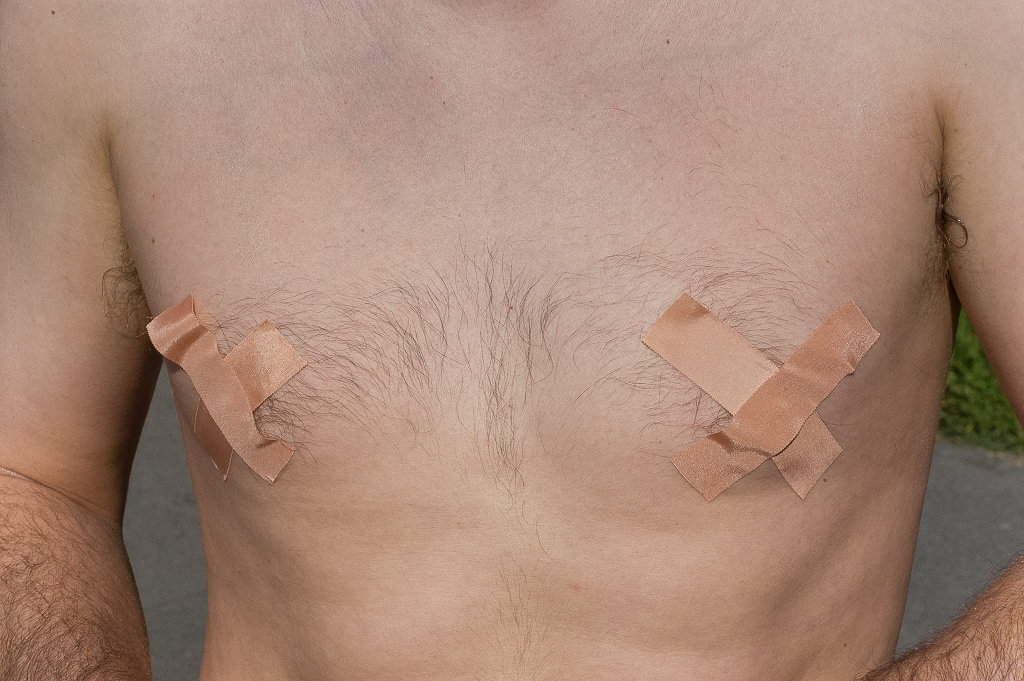
A certain dark twist of humour is another aspect of Robert’s work you don’t find that often these days, we are all so serious about our precious images it sometimes verges on comical, is what for me he seems to be half saying here. Add to that a good amount of ambiguity and you get another memorable shot, full of heat, sweat, allusion to a dark sexuality, all in a simple crop of a tired runner taping his poor nipples to avoid chaffing. Hilarious? Complex? Dark? Check, check, check.
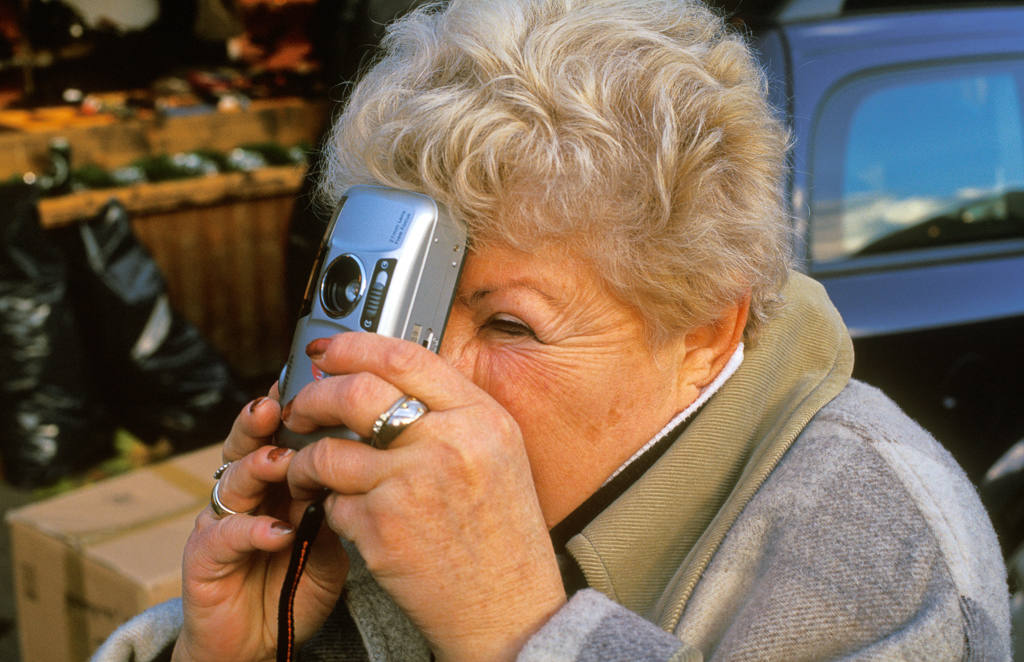
Here is where we start to see the auto analysis of a photographer and the medium, again hidden underneath comically vernacular shot of middle class older lady, holding on to the camera for her dear life – the intensity of her focus for sure is stronger than her cheap point and shoot’s lens, one can feel how much she needs and wants that shot, it is deadly important to get it, and get it right. Sound familiar? Sure it does, I’m pretty certain at the core of my work is the same psychological obsession with the need to “be at work” (luckily, we have got some great writing on it already, so I can simply stop here and refer you to Susan Sontag and her “On Photography”). Another great image, so rich and so simple. The more I look at Robert’s work, the more jealous I become.
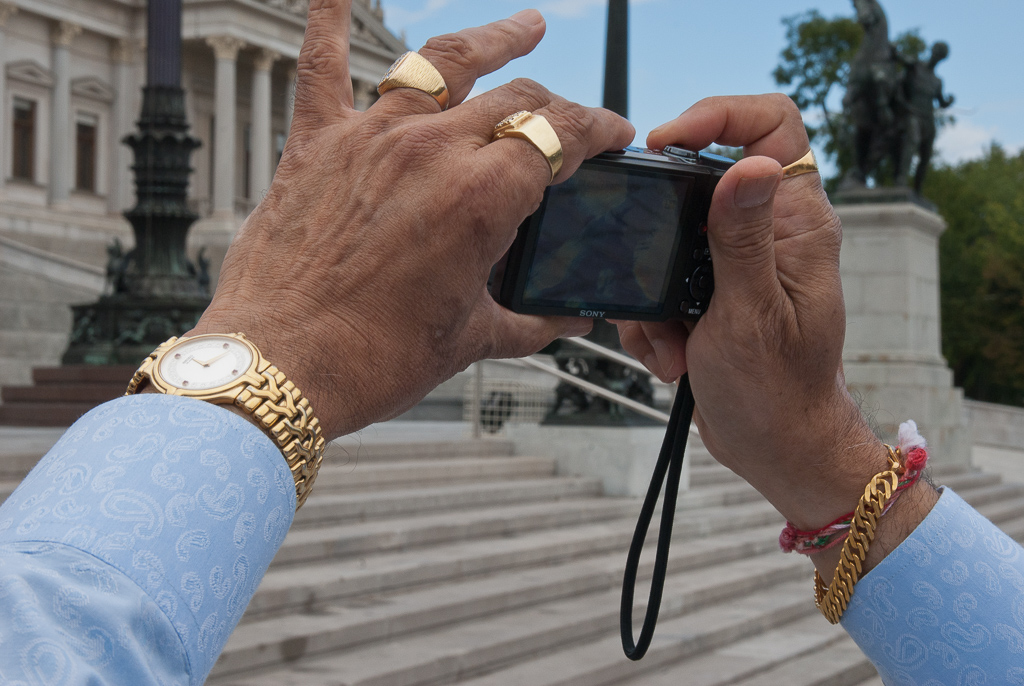
Feels familiar? Kind of similar to the previous shot, but kind of very different. Same pathology, different direction, this time it is all about ownership. Obviously. I love how we can’t see what he is actually photographing, that would spoil the image as it’s not really about what is in his frame, it is all in the attitude.
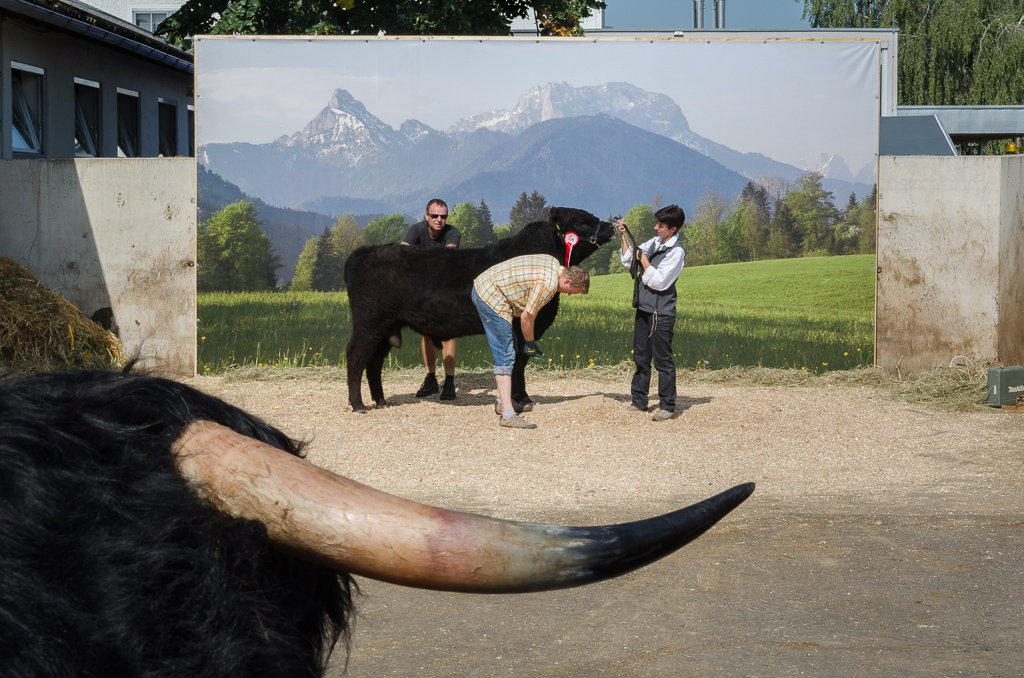
As I mentioned before, Robert is investigating the boundaries of our medium but also its usage, the dreams, lies, deceptions, trickery, the not-so-apparent sexuality of the very act of photographing, and what can be a better symbol here than prize bulls? Picasso would love this one for sure.
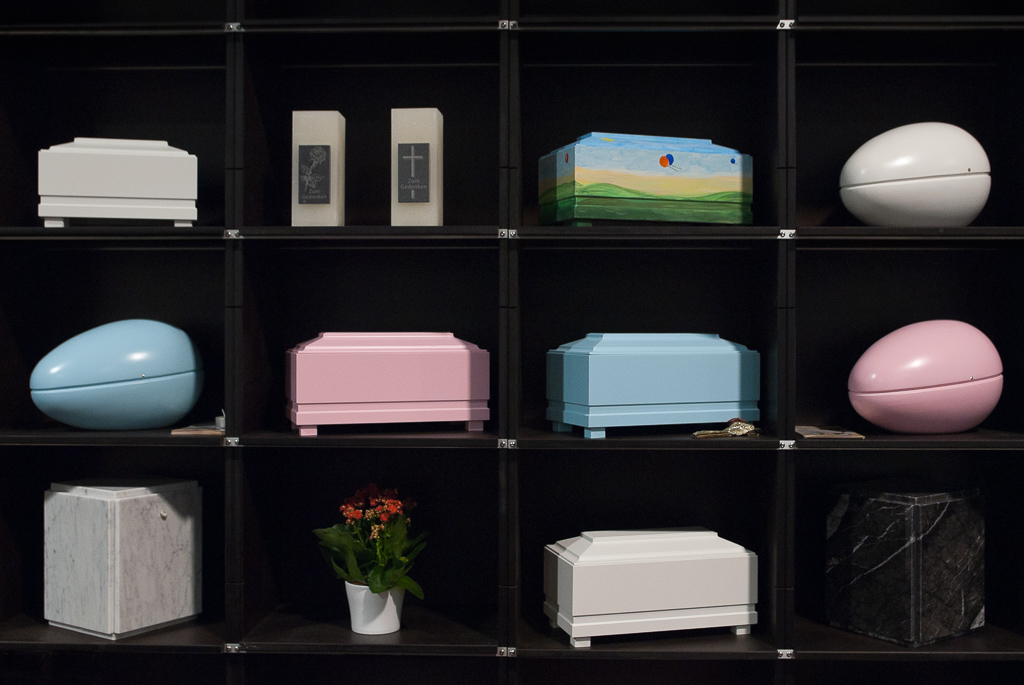
Yes, I simply love this shot – a selection of urns, all colours, sizes and shapes included. It takes a simple, restricted photograph to just highlight the absurdity of the fact, any fancy technique would not be appropriate. Again, it is all about the content, and formal restriction is the way to go for Robert. Looking at this I can’t help but get an impression the author is a deeply spiritual person, disappointed by western (and increasingly global) consumerism and amused by what is looked as “normal” in that sphere by our post-industrial society. Mind you, it’s just my speculation. I do share the sentiment though. A pink egg? Really?
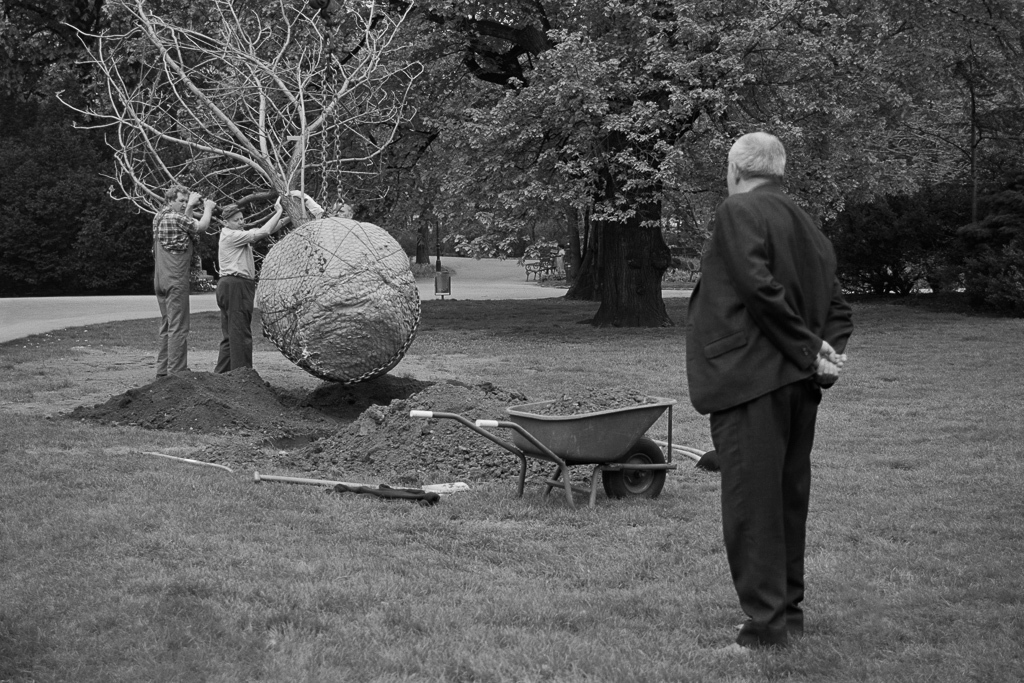
Again we are coming back to “work”, “authenticity”, “image” (in the broader sense of making an impression), all put together in another simple, everyday scene, just some bored gentlemen going about their daily shift, with the manager (city official? or just a passer-by, feeling the class difference, bathing in his suited superiority?) casually observing.
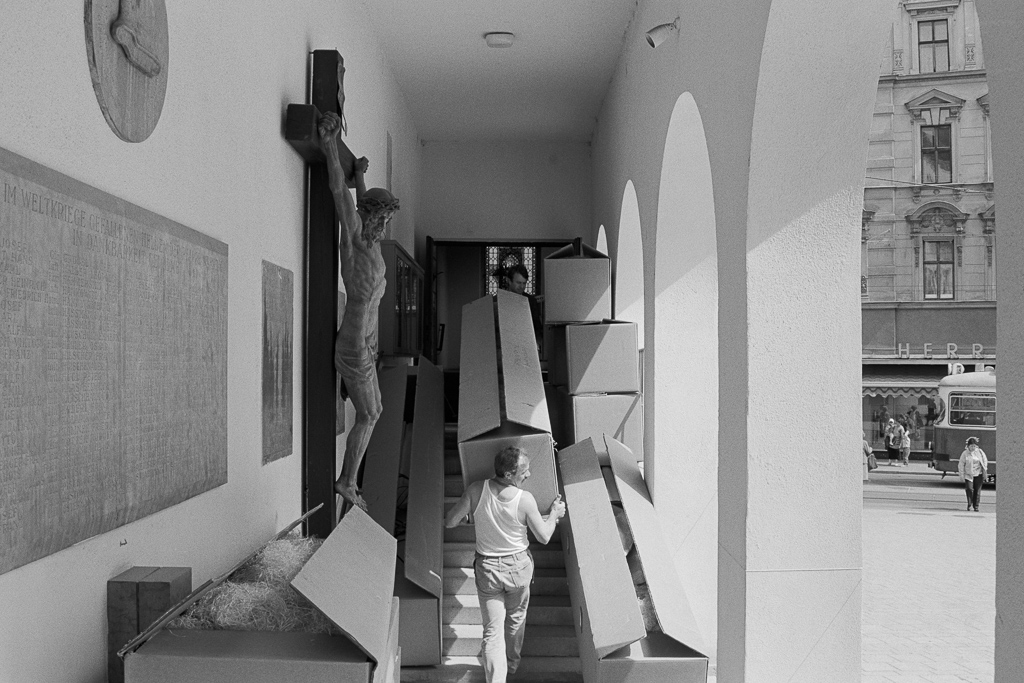
See how I cleverly put those two image next to each other? Again, very similar in a way. Christian church has always been very close to power, for a long time, as you history geeks out there for sure know better than me, it was “The Power” in the western world. The great tragedy of spiritual practice taken over by feudal oppression still continues today (even if it is just a shadow of its former self). This sad Christ, silently observing the working class men with their strangely coffin-like boxes, surrounded by some heavy duty architecture, has been alienated and removed from the “real world”, here represented by a thin sliver on the right. Oh, and for all you out there who did not take German as their second foreign language, “Herr” means “Lord”. This must be one of the very few instances where the “title” of the image spelled out by its content actually works, in the best of Walker Evans’ style.
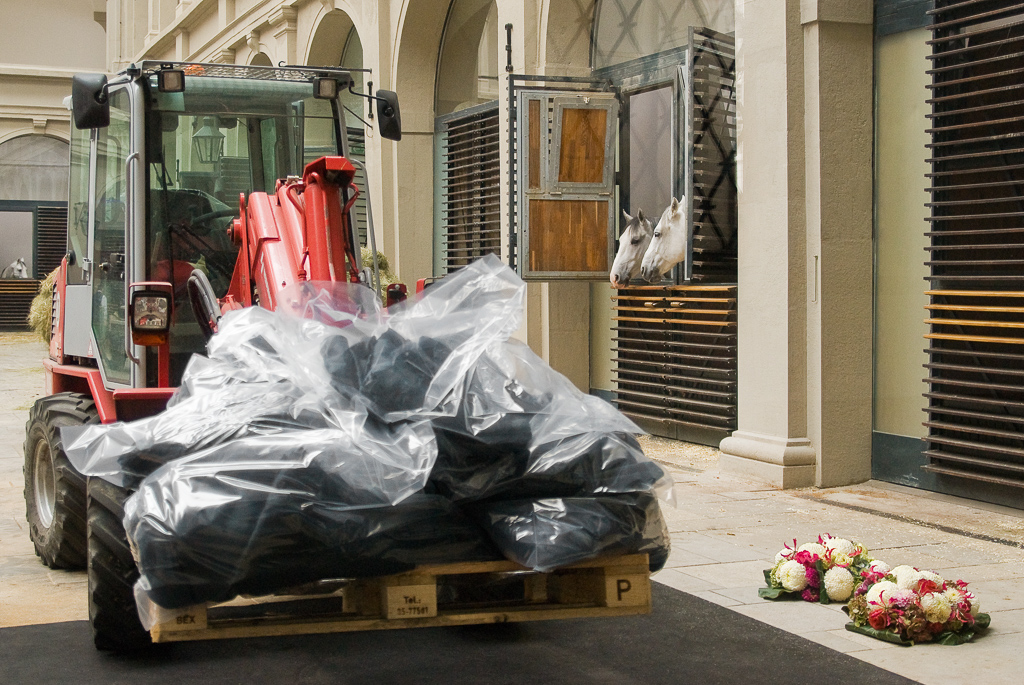
Now this is where I personally think Robert really shines. Here we have less of a pure narrative, less of a symbol puzzle, but you do feel a chill on your spine. It’s weirdly funny, weirdly dark at the same time. It may be just me, but I feel this gentleman shares my obsession with death. Two horses, two bunches of flowers so very much “on their way to be put on the nearest tombstone” and those two black “what the hell is this” things wrapped in plastic. Are those dead horses? Most likely not, but the ominous feeling is here, so full of sunshine, on this most mundane of things, a red forklift.
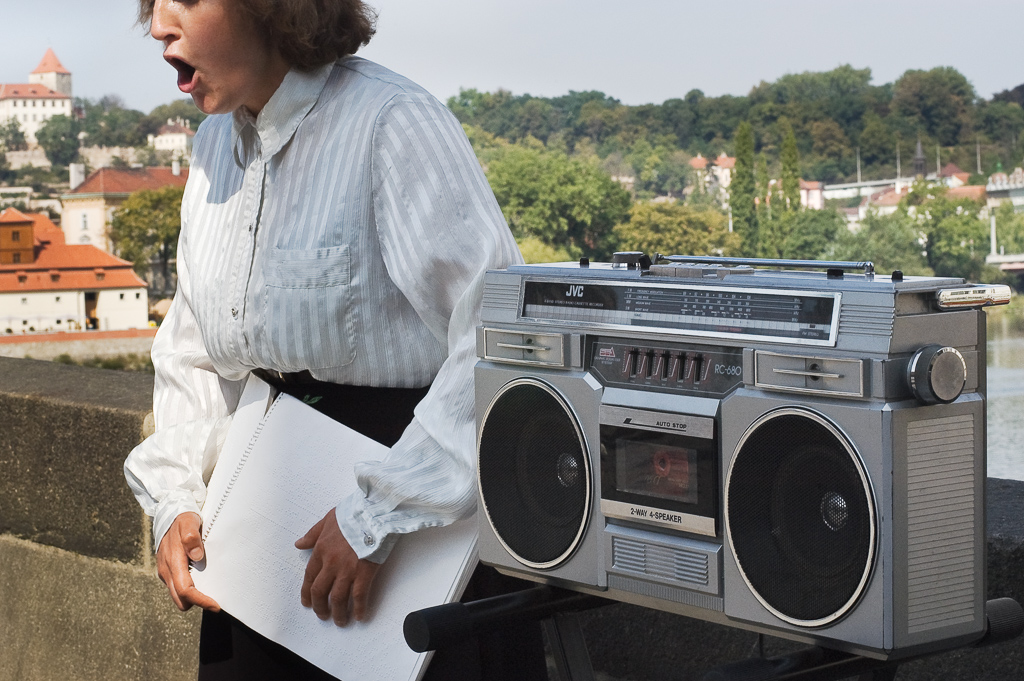
It’s not all doom and gloom though. The blind singer isn’t exactly the happiest image either, mind you. As you probably noticed by now, Robert is not really a “feel good about life” type of an artist, and I personally like that. The lady’s vintage clothing, the properly old school JVC device younger of you wouldn’t even know how to turn on is one thing, but the crop going straight through her eyes, negating them is another. I’ll leave you to ponder that one.
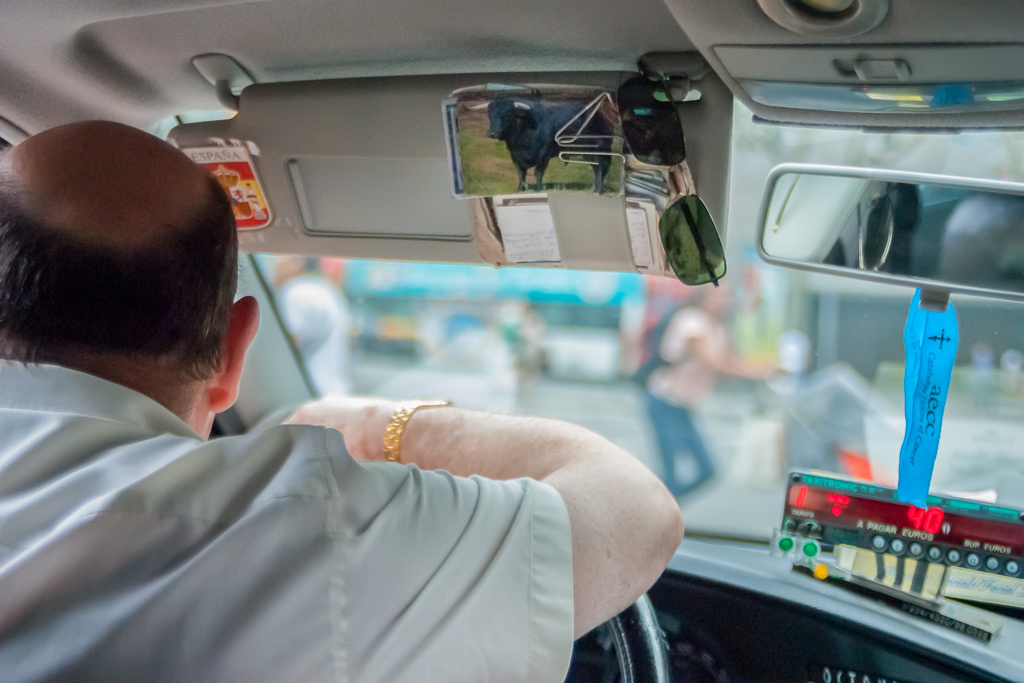
And this. Something a bit lighter, not massively though. An older, balding, overweight taxi driver seeing himself as a bull. It is Spain, but still, the contrast between actuality and dream, the unbridgeable gap is nothing to laugh about. Do take note of the shallow depth of field, a technique Robert employs very rarely.
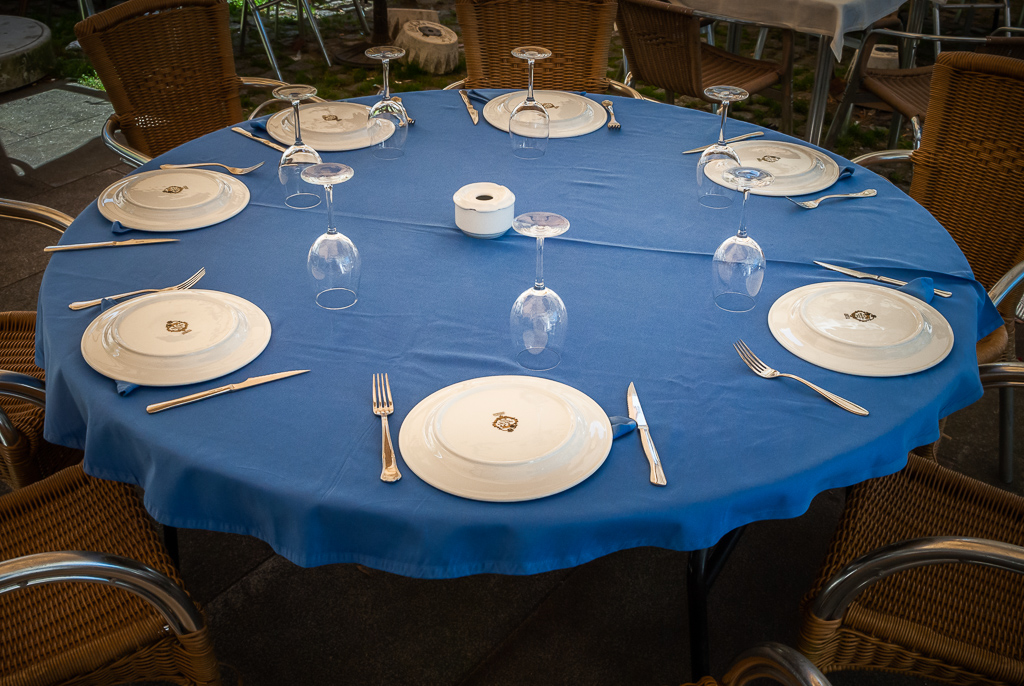
If now I tell you Robert can see details and build images around them, you will not be surprised. But have a look at this table, and do take your time.
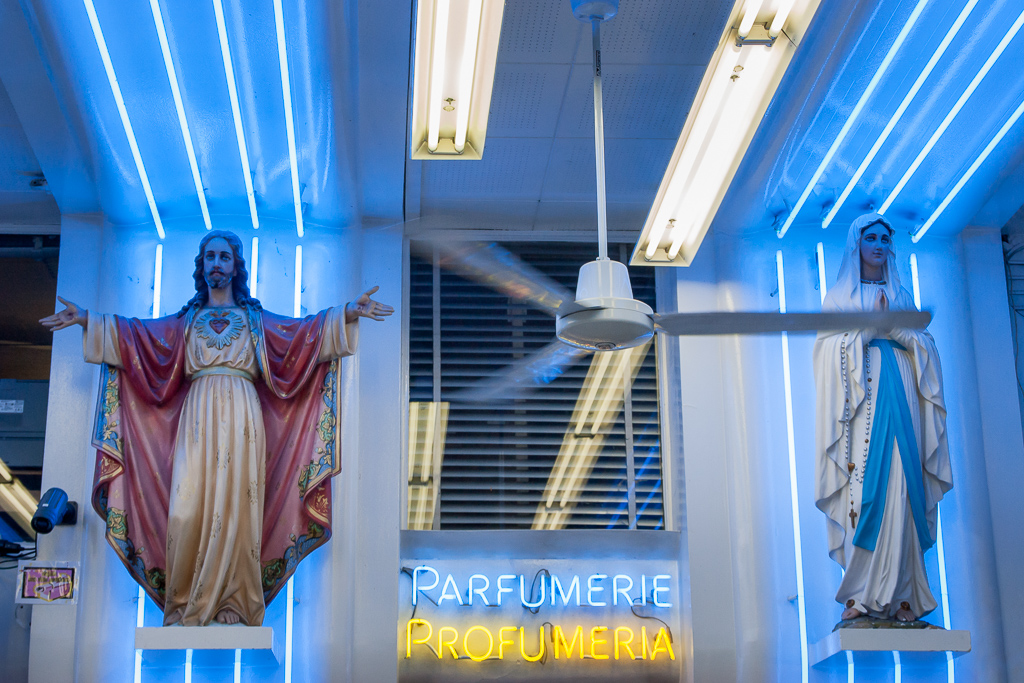
Coming back to religion, this time neon disco style. So pretty, so cute, and so sad.
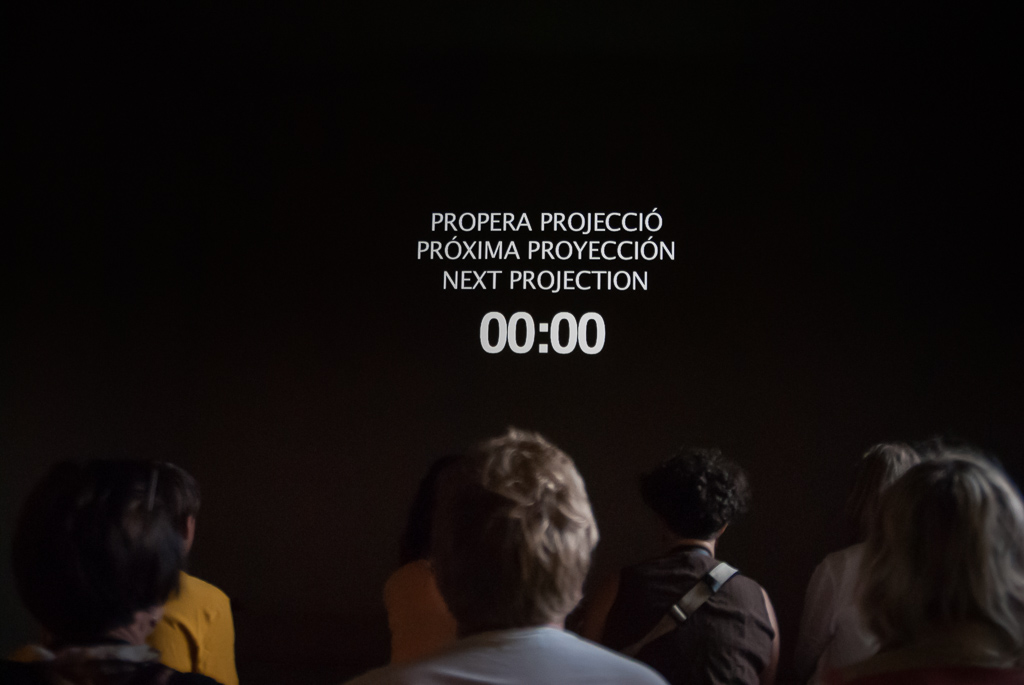
And this, this is just so juicy. Indeed, sometimes timing is everything.
If you enjoyed reading this post stay with us for more of Robert Rutöd’s photography. Also you might want to check his website to find out more about his work.
Share this Post
Recent Posts

